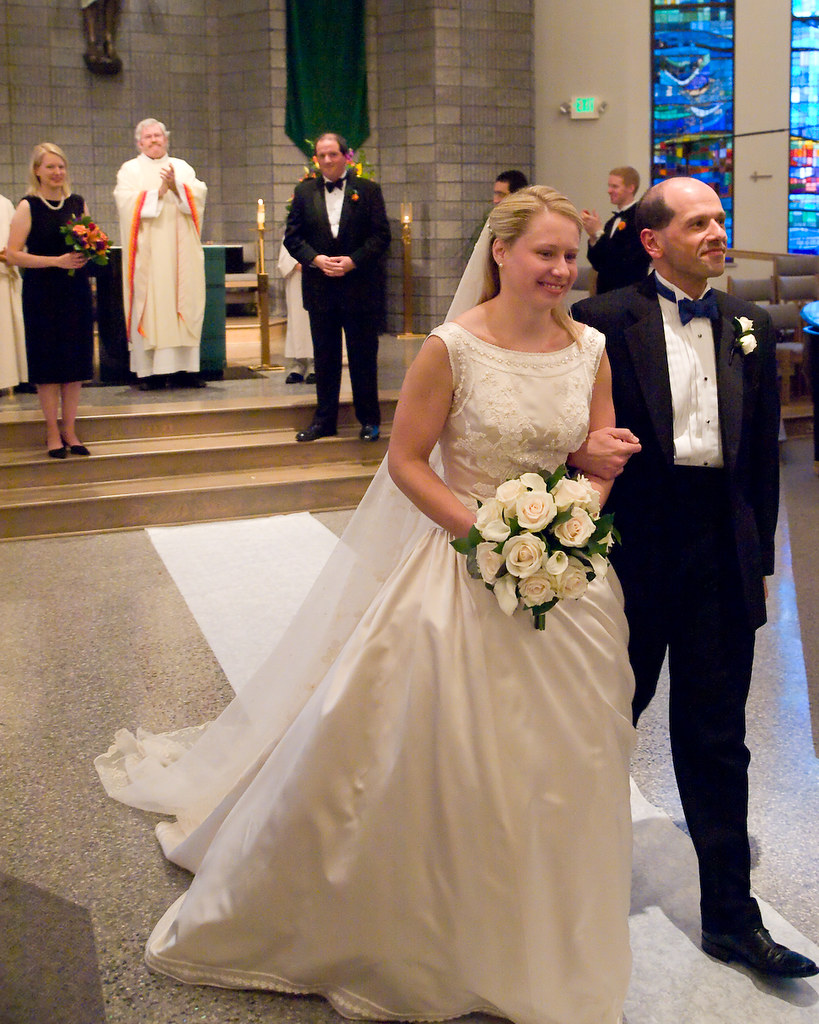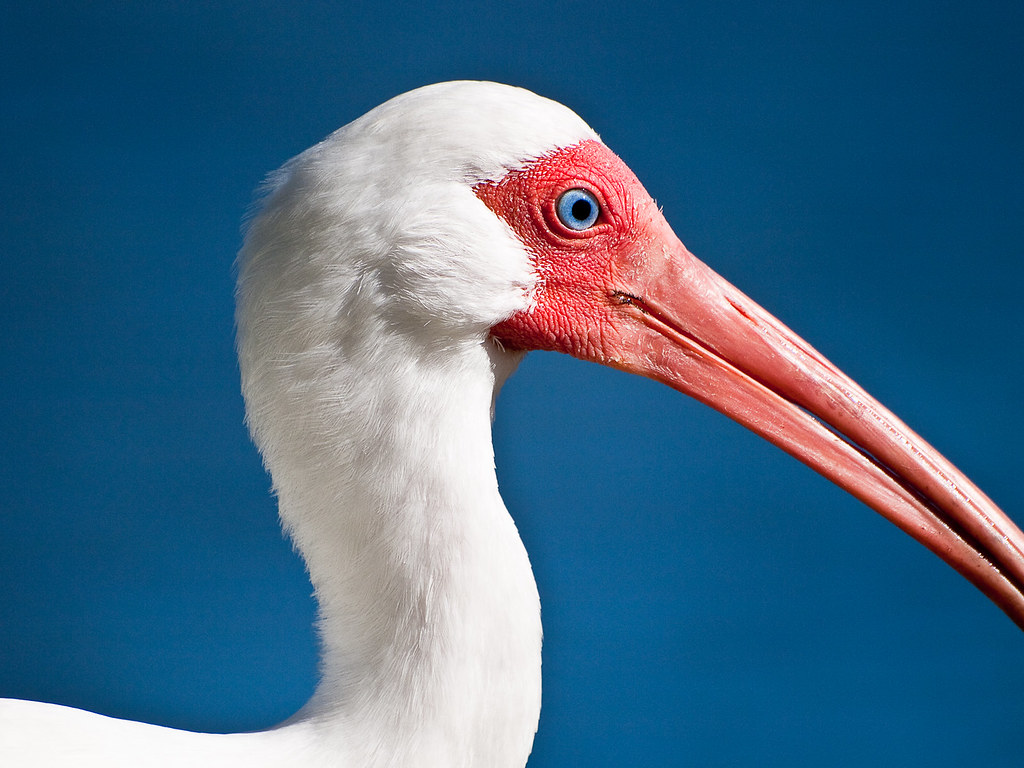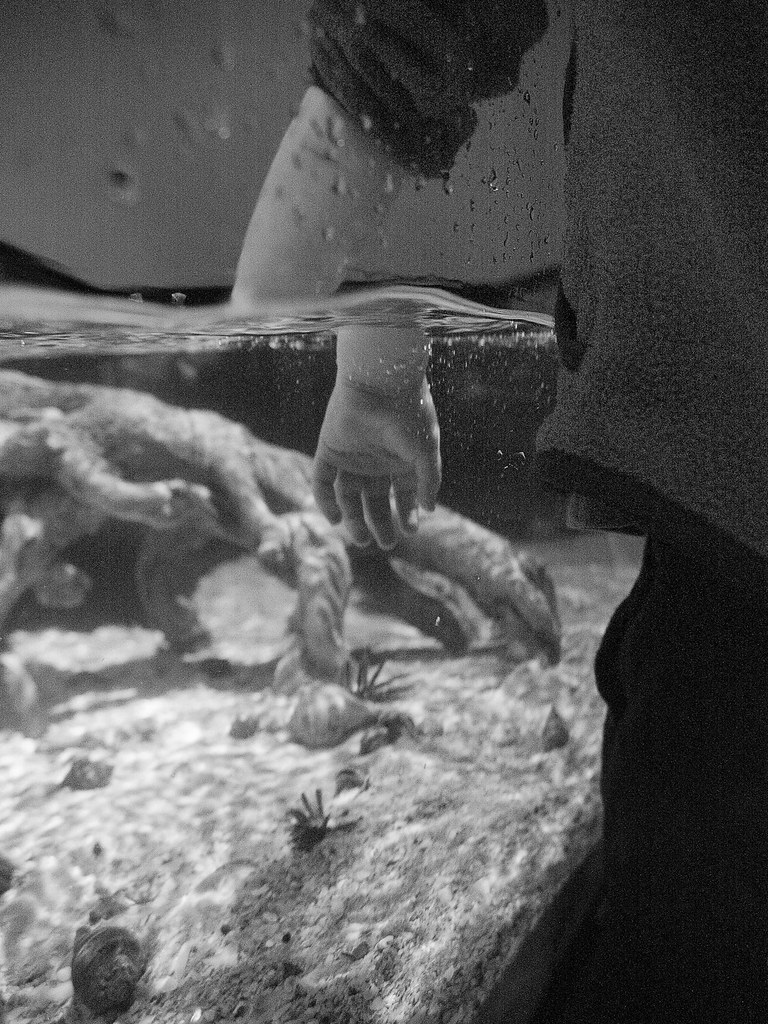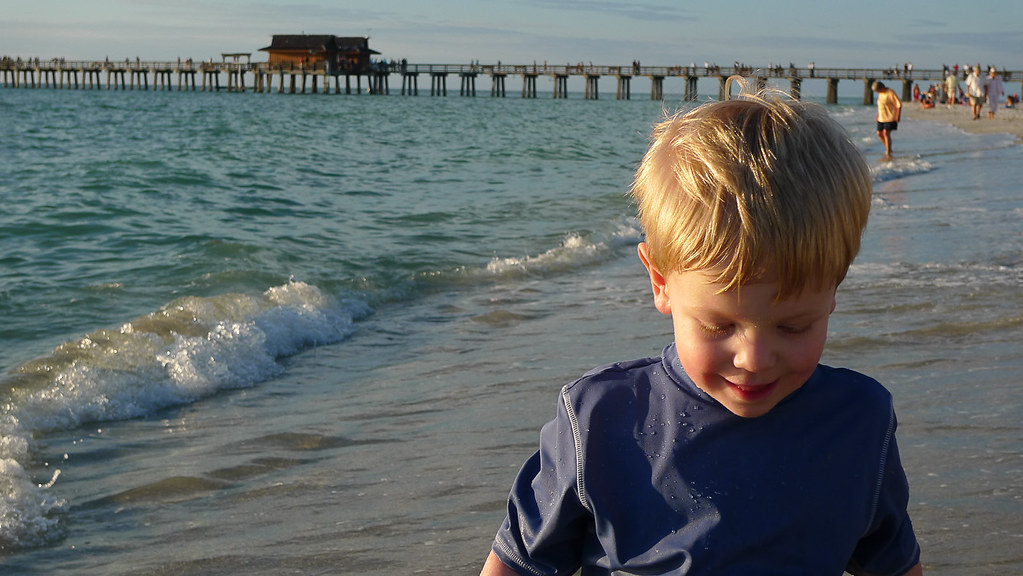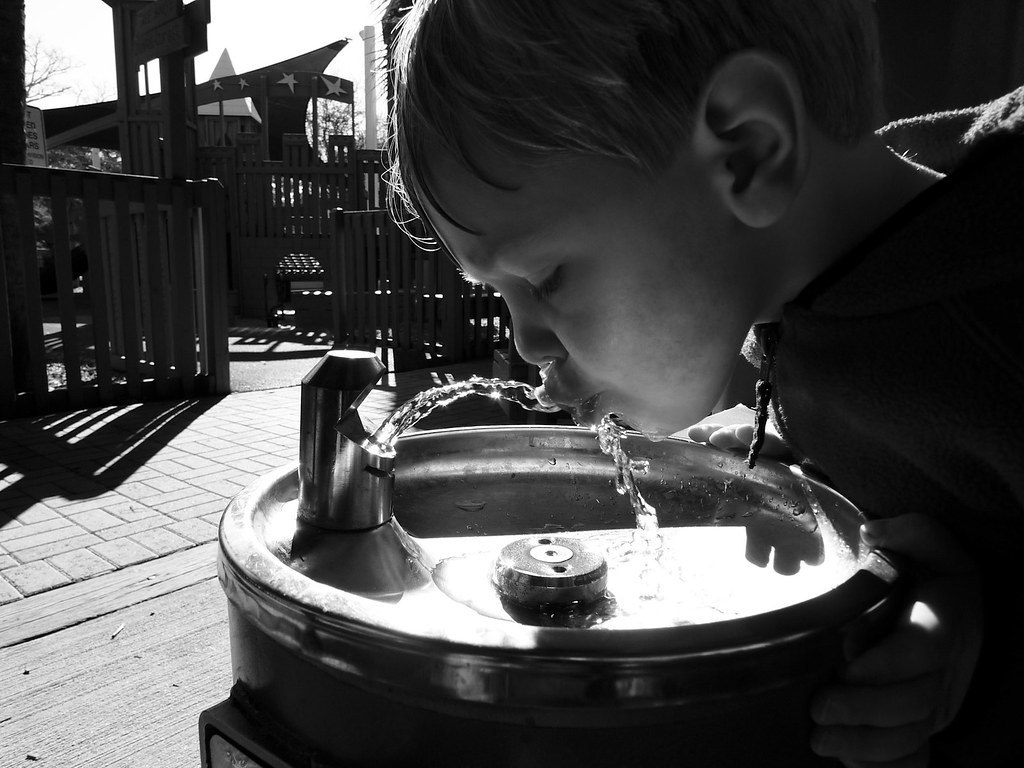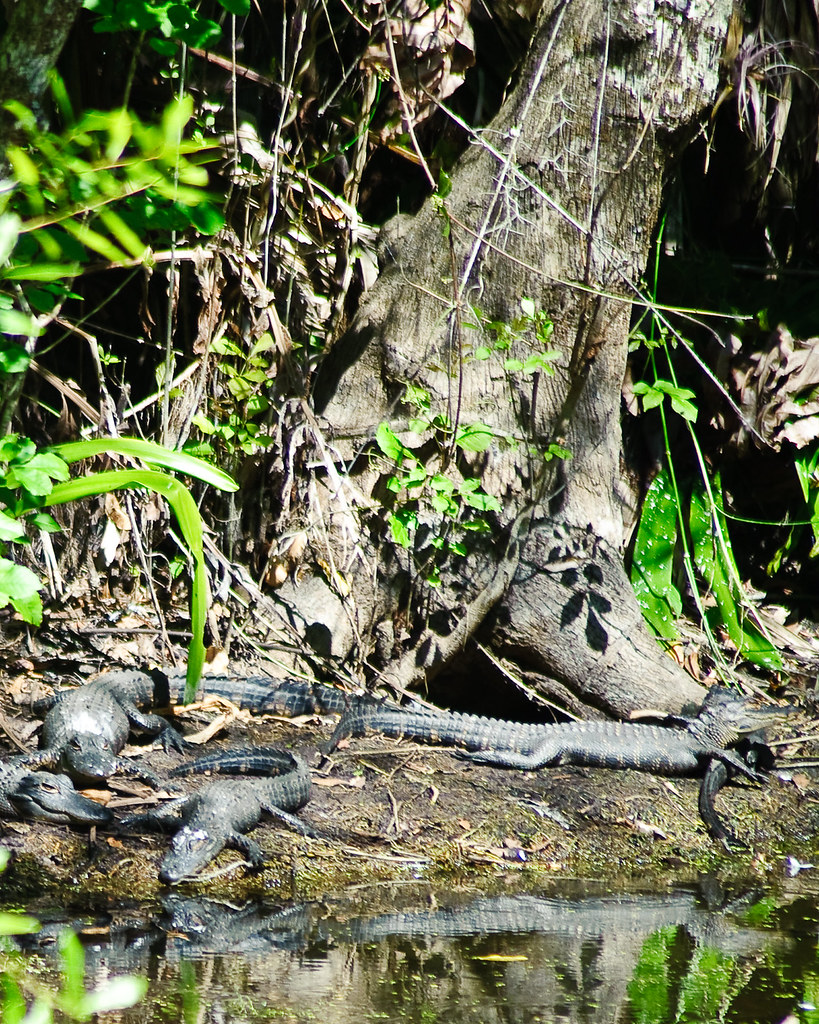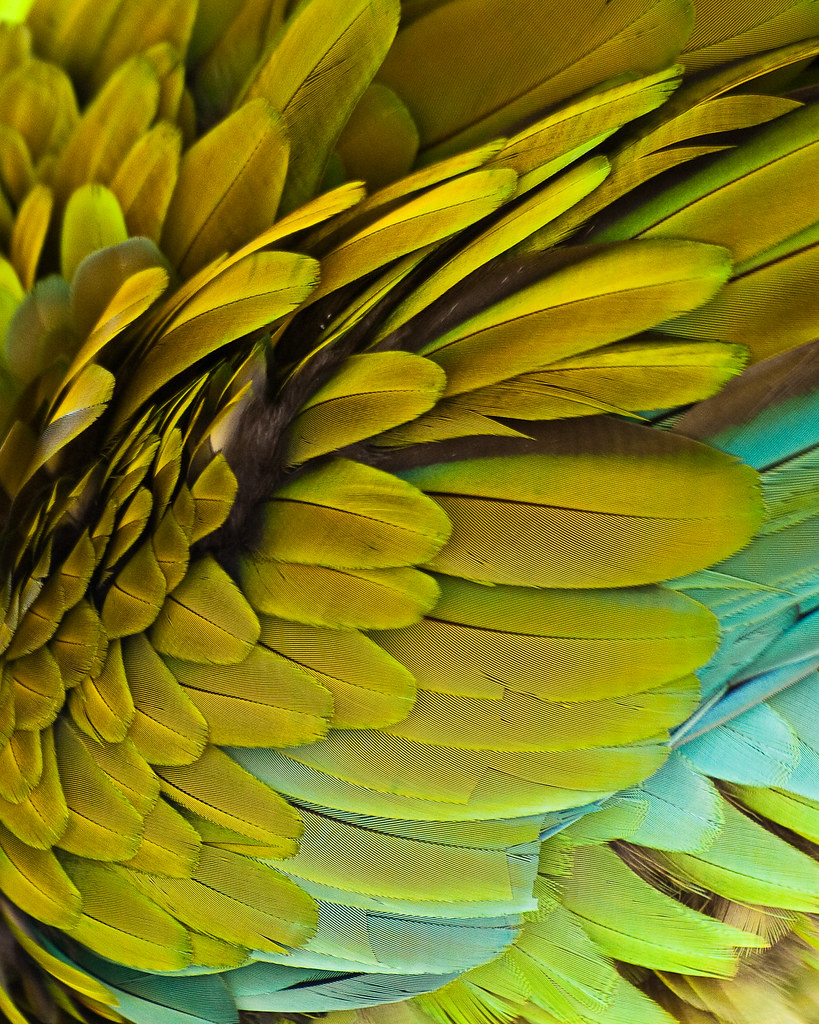On the trip to Florida, I brought a backpack full of camera equipment, and three different camera systems: The Panasonic LX-3, the Olympus E-520 and two lenses, and the Nikon D700 and four lenses. This is just insane. My advice to you: If you’re ever going on a “vacation” that involves two kids still in diapers, leave the backpack full of camera gear at home. Bring more kid toys, not more grown-up toys. That said, for those who are interested, read on for my hard-won opinions of using these cameras on vacation.
Olympus E-520
If I could only bring one camera system on “photo enthusiast” vacation, then without a doubt it would be the Olympus E-520, the Olympus 12-60 zoom, the Olympus 70-300 zoom, and the Olympus 50mm macro.
For me, the Olympus E-410 was the gateway drug into Olympus cameras. On my vacation to Maine last summer, all I brought was the Olympus E-410, the two kit lenses, and the 50mm macro. I left the Canon 5D at home. I really appreciated the light weight, both when packing and when travelling around town. The images were excellent. (Example set.)
Because I was so happy using the 410, I splurged and upgraded my lenses. On my trip to Minnesota last fall, I brought the 410, the trusty 50mm macro, and my new 12-60 & 70-300 zooms. As long as I stayed in good light, this was a great travel kit: Easy to pack, easy to carry around. Although, honestly, not as light and easy to carry around as the kit zooms. And the heavier weight of the 12-60 was a little awkward on the 410. That body doesn’t have a good grip, and I found my wrist fatigued carrying around the heavier lens. And, as I’ve noted before, this camera system struggled in the church & reception of my sister-in-law’s wedding.
“The Newly Married Couple.” Olympus E-410 with the 12-60 lens.
While in Minnesota, I found a killer deal on a used Olympus E-520 body on EBay. I couldn’t pass it up. (Did I say gateway drug earlier?) Compared to the E-410, the primary thing you get with the E-520 is built-in image stabilization, a bigger battery, and a bigger grip. Because of the grip, the bigger zoom lenses are easy to carry. No more wrist fatigue.
In Florida, the E-520 was by far the most versatile camera system I brought with me. The E-520 and the 70-300 lens was the combination I used for all of my wildlife photography on my trip. There’s no way I could have gotten as many “keeper” pictures on my boat trip through the Everglades without the 600mm-equivalent reach of the Olympus (image stabilized!). All of this in a much smaller and less expensive package than what you’ll find from Canon or Nikon.
“Ibis Eye.” Olympus E-520 with the 70-300 lens.
What keeps the Olympus 520 from being the only camera you need? For starters, bring it indoors, without a flash, as I did at the Conservancy of Southwest Florida. It’ll take pictures, but it struggles for focus, and its high-ISO/low-light capabilities are only OK. All of my pictures from the Conservancy are in black-and-white not for artistic effect, but because that was the easiest way to get acceptable images from the 520 in that lighting. The viewfinder is pretty bad, something that annoyed me more when I was trying to compose pictures with relatively small, distant wildlife. (Since I was often shooting the D700 along with the E-520 in the same session, the E-520’s viewfinder deficiency was only that much more apparent. When shooting wildlife, I found myself wishing I had the Olympus E-3 which I’d rented in December, but can’t justify purchasing. The viewfinder and faster shooting speed would have been very welcome.)
“Tidepool Refraction.” Olympus E-520 with the 12-60 lens.
Honestly, though, how often do you vacation somewhere sunny and warm just to spend the entire time indoors in crappy lighting? The 520 plus Olympus’s exceptional lenses could easily be the only camera system a photo enthusiast brings on vacation – **if_ _**it wasn’t for one small detail…
Panasonic LX-3
…there’s no more sure-fire way to look like a dork on a beach than to carry an SLR slung over your shoulder plus an extra lens or two stuck in your photo vest. Sometimes, you just need a point-and-shoot, inconspicuously tucked away in a pocket of your cargo shorts.
For me, that point-and-shoot is the Panasonic LX-3. For a while last year, I owned the LX-2. I loved how it natively used the 16:9 aspect ratio, but I hated how S-L-O-W it was and how splotchy its pictures looked in anything but the best light. I eventually sold it.
As someone who thought the LX-2 was overhyped, I’m happy to report that the LX-3 delivers the goods. There’s just something about this camera that makes me smile when I use it. First, let’s talk ergonomics. The camera is small & solid. It’s easy to carry, with lots of switches that move with satisfying precision. I particularly appreciate being able to switch among different aspect ratios with a flip of a switch. (And unlike other cameras, there’s a real reason to choose different aspect ratios on the LX-3. Different aspect ratios use different parts of the sensor, and it’s not just cropping the picture when you choose a different aspect ratio.) The LCD is wonderful – an important point when it’s your only way to compose. I’ve heard lots of complaints about how it has a lens cap, which is just one more thing to lose… for me, that’s never been an issue. I have absolutely no problem using the camera with the lens cap tethered to one of the lugs. I wouldn’t even think about it if it wasn’t for all of the complaints I’ve read. And if the lens cap is the price we have to pay for a sharp, 24mm-equivalent f/2.0 lens, then it’s a small price indeed. You won’t find another point-and-shoot with wide-angle lens specs like that.
“Alex, Looking Down.” Panasonic LX-3.
Second, the image quality is great, especially at the base ISO (80). Unlike the LX-2, you can stray quite far from base ISO and still get good pictures. Pictures are sharp & detailed (especially in the bright light of southern Florida).
Third, the “film modes” are actually quite useful. I found them easy to integrate into my shooting. An example thought process: _Hmm, it’s foggy. I want to take photos that emphasize the look I’m seeing with my eyes. Let’s use nostalgic film mode to slightly desaturate the photo… _A few button clicks, and I’m golden.
“Drinking.” Panasonic LX-3 in dynamic black & white film mode.
I don’t really consider the LX-3’s limited zoom range to be a handicap. Maybe it’s because I subconsciously assume you should be using an SLR for any long focal lengths. Whatever the reason, I find myself somehow forgetting that the LX-3 is more than a 24mm-prime camera. (24mm! Did I forget to mention how great that is? And f/2.0?) When I remember that the camera can zoom at all, it’s a bonus.
The only real drawback to the LX-3 is it’s a point-and-shoot. Autofocus is slower than an SLR, there’s no optical viewfinder, no option for another lens. But there’s really no reason not to have the LX-3 (or some other enthusiast point-and-shoot) in your luggage when you travel.
One side comment. I’ve noticed that the LX-3 is in short supply these days, especially in black. Silver seems to be easier to come by, and sometimes cheaper, too. I first thought I really really wanted the black version. It is certainly an attractive camera. But when I bought it, the silver was substantially cheaper. My advice: buy silver, especially if it’s cheaper, and especially if it’s the only color in stock. That’s what I did. The pictures look the same no matter what the body color. I haven’t regretted spending less money for an instant.
Nikon D700
Which brings me to the D700. I’ve only had the camera for a month and a half. It took up by far the most space in my backpack, and it cost way more than the Olympus and Panasonic combined. And it’s the first camera I would have left behind if I was pressed for space on the vacation.
“Morning Buffet.” Nikon D700 with the 24-70 f/2.8 lens.
The Achilles heel of any full-frame camera system is the lenses. Nikon FX lenses are big and expensive; they have to be to produce a large, high-quality imaging circle that fills the much larger sensor. One thing I learned on this trip is when the Nikon lenses aren’t big and expensive, then you’ll notice. When I was at Big Cypress Bend, I got to borrow someone’s Nikon 70-300 f/4-5.6 lens to take the pictures of the baby alligators. I shot these photos at 300mm, maximum aperture because of the distance and the spotty light. When I post-processed the photos, I noticed that everything looked blurry when I zoomed in to look at the alligators. Now, I’m not a pixel peeper… but whoa! So this is what a lens looks like when it is soft! The Olympus 70-300, by contrast, was sharp even when wide-open and at 300mm.
Top: “Basking Alligators.” Nikon D700 with 70-300 lens. Bottom: “Macaw Feathers.” Olympus E-520 with 70-300 lens. Both shot at f/5.6. If you were to view the files at 100%, you’d see a much sharper picture from the Olympus camera/lens.
But the same things that originally seduced me to the D700 remained true on the vacation. The viewfinder is awesome. I really noticed this when I used the E-520 and the D700 side-by-side. For me, this makes a big difference. It’s just significantly easier to compose in the D700 viewfinder. Second, the D700 is an order of magnitude more responsive than the E-520. Autofocus is faster, shutter lag is shorter, frame rates are faster. I very rarely felt that anything was in the way of me capturing the precise instant I wanted recorded in bits & bytes. The D700 is just more fun to shoot with. Finally, with the right lenses mounted, the D700 captures great images that stand up well to post-processing. All of the beach sunset photos, for instance, have tricky lighting and went through a lot of post-processing to recover both the bright colors in the sky and the comparatively darker colors of the beach. I don’t think I could have captured these pictures with the E-520, which is notorious for clipped dynamic range.
“Alex and Jack.” Nikon D700 with the 24-70 lens.
By far, the D700 is the best camera I brought on vacation – and if I could only own one camera, it would be this one. But given its size and weight, it’s not the best vacation camera.
As I said before, I wouldn’t recommend bringing this much photo equipment on any trip with two kids in diapers. But the experience taught me a lot about the strengths and weaknesses of my equipment. I hope you, dear reader, have found this informative.
